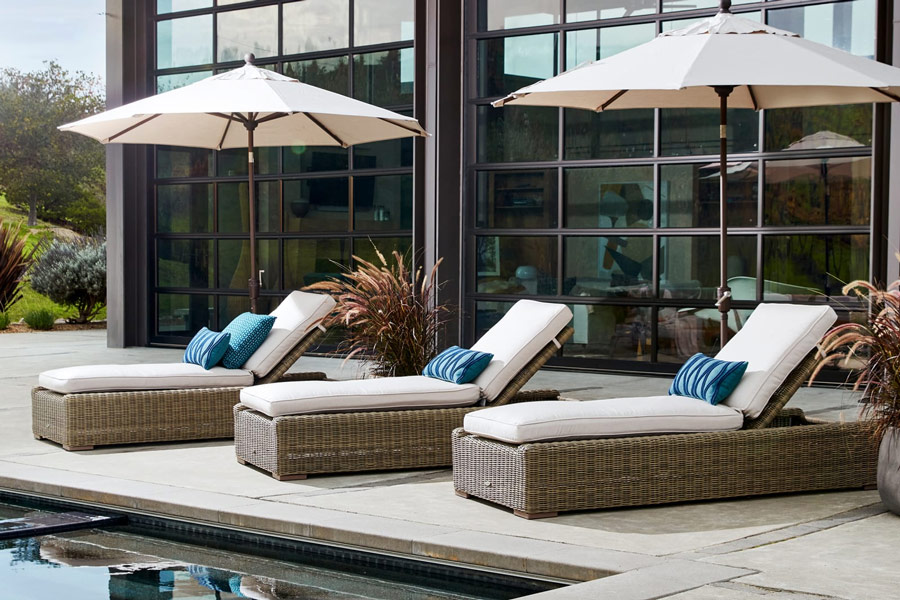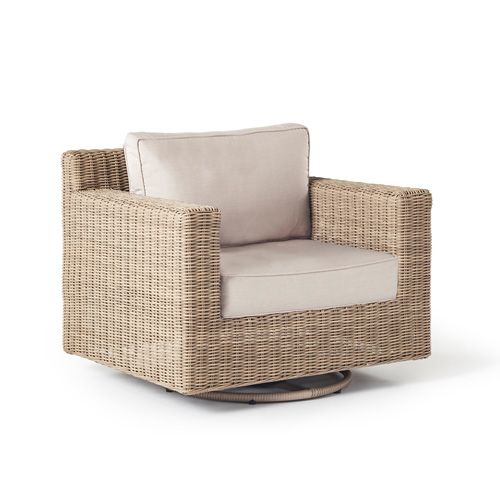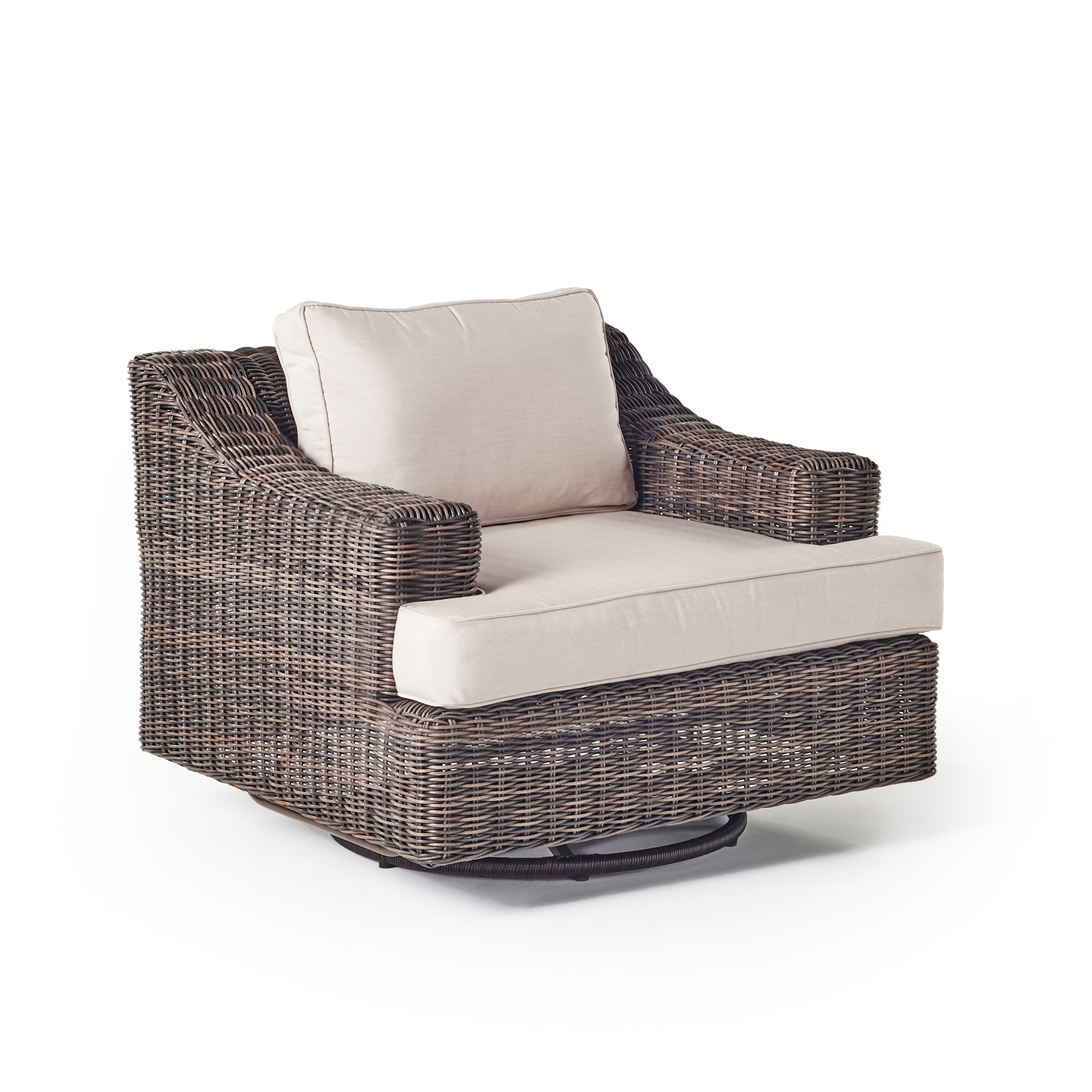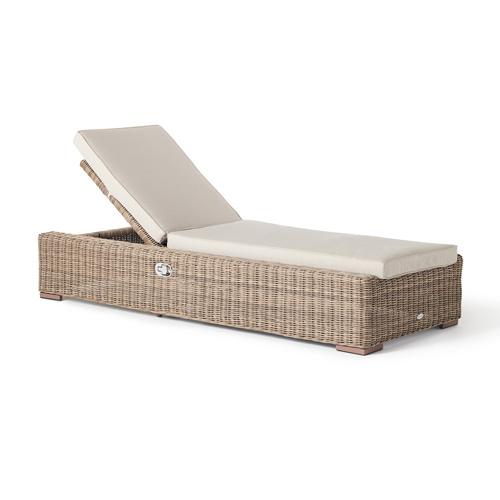Pictured above: Sausalito Chaise in Natural Wicker with Market Umbrellas
Lightweight, strong and beautiful, wicker outdoor furniture is a classic choice for relaxed living. Wicker emerged in North America in the mid-1800s, gracing porches of Southern plantation houses and Victorian town homes alike. However, wicker weaving is one of the oldest forms of furniture-making in the world and dates back much further.
What Is Wicker?
Many people use the terms “wicker” and “rattan” interchangeably. However, wicker refers to the technique of weaving thin strips of material over a rigid frame. It’s crafted from many different plant fibers, including rattan, willow, raffia and bamboo.
Traditionally, the materials were soaked until they were pliable enough to shape and weave, becoming strong and supportive as they dried. Using that time-tested technique, wicker artisans create a vast array of furnishings. The application of wicker ranges from simple baskets and stools to elaborate sofas, rockers, dramatic peacock chairs, ornate plant stands, baby carriages and even the passenger gondolas of hot-air balloons.
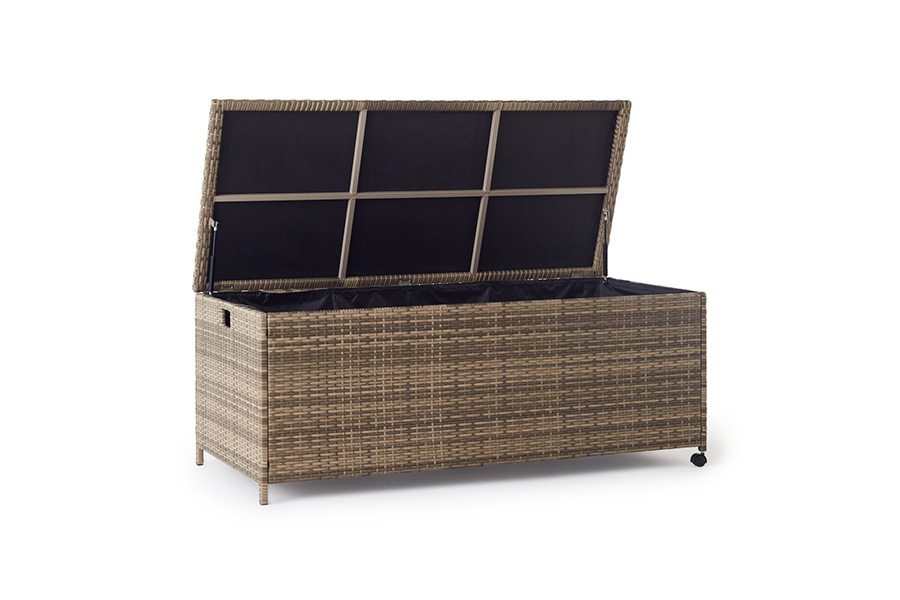
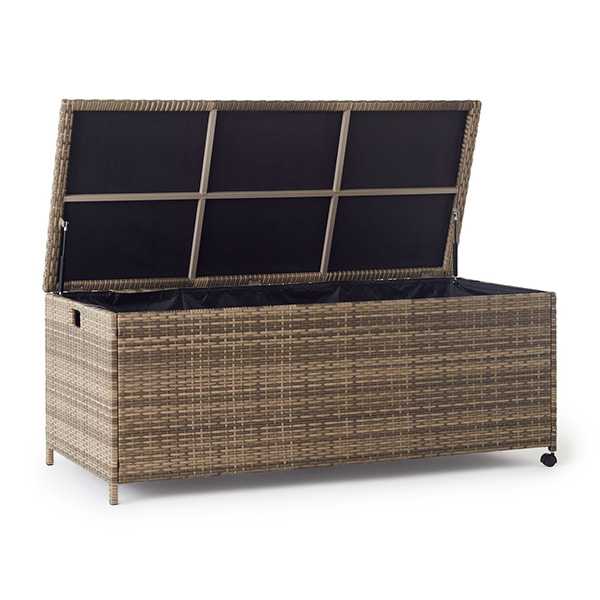
Pictured above: The Laguna blanket box, with an exterior made from all-weather wicker
A Brief History of Wicker
While America’s love affair with wicker is only a century and a half (or so) old, wicker dates back to ancient Egypt, when artisans wove baskets and furniture from rushes and reeds. Soldiers of the Persian Achaemenid Empire (550 BC) carried hide-covered wicker shields into battle.
The Romans adopted wicker-weaving techniques for baskets and furnishings of their own, and as their empire expanded, wicker spread around the world. By the 17th century, wicker furniture could be found in homes all across Europe.
In the mid-1800s, Cyrus Wakefield – a Massachusetts entrepreneur who established himself by selling bales of rattan that had been used as ship ballast – began using the material to make baskets, skirt hoops and, eventually, furniture. Americans loved wicker’s beauty and durability, and innovations in manufacturing made it affordable, too. By the turn of the century, wicker was here to stay.
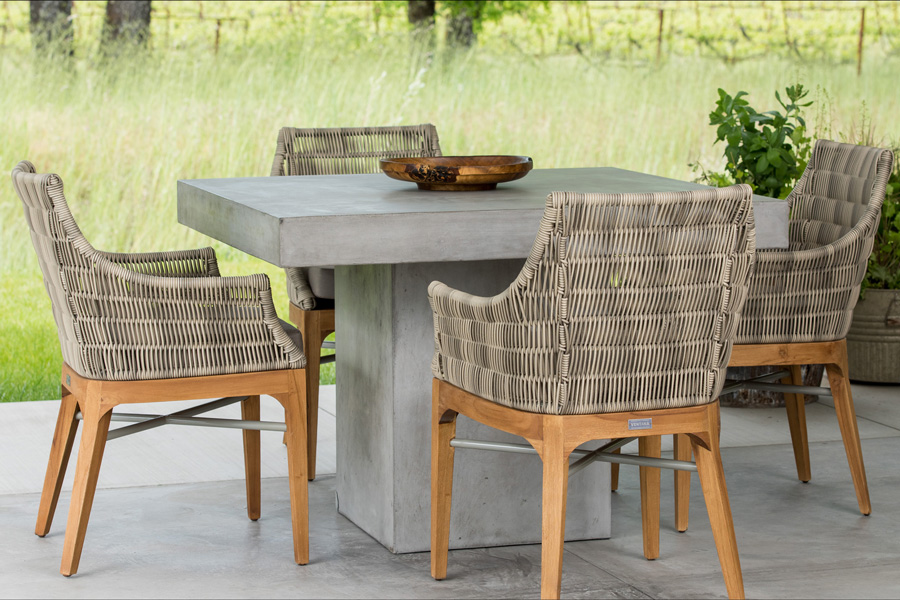
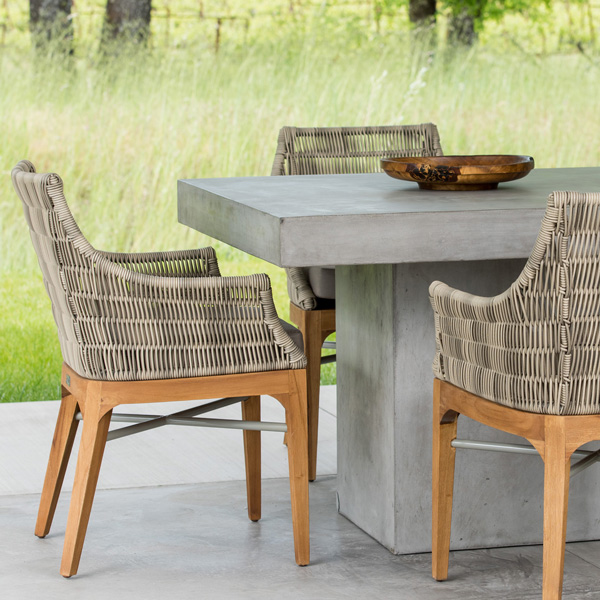
Pictured above: The Mason concrete dining table paired with wicker and teak dining chairs from the Madera collection.
Wicker Evolves for All-Weather Applications
Wicker’s enduring popularity stems from the fact that it’s strong, resilient and long-lasting without being heavy. Additionally, the wicker weaving technique works with many materials to create a wide range of silhouettes and styles. Therefore wicker furniture has continually adapted to suit the taste of the times.
Over the years, automation made new types of wicker possible, including a variety crafted of paper twisted tightly over steel wire. But until recently, all wicker shared the a similar problem with durability.
Because wicker derives from plant fibers, traditional wicker furniture did not hold up well to outdoor use. Moisture, sunlight, extreme temperatures and other factors broke down the natural materials over time and caused protective finishes like paint and varnish to fade, peel and chip.
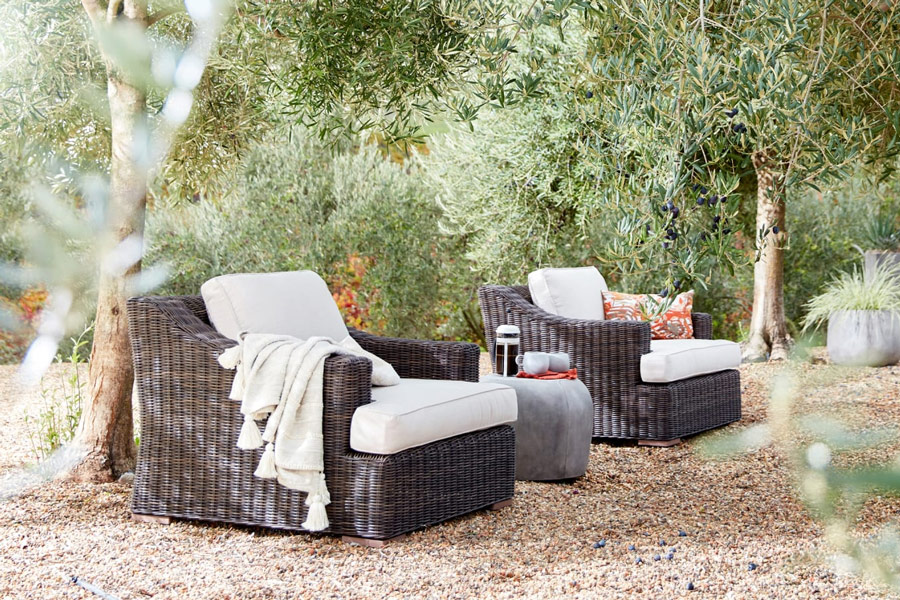
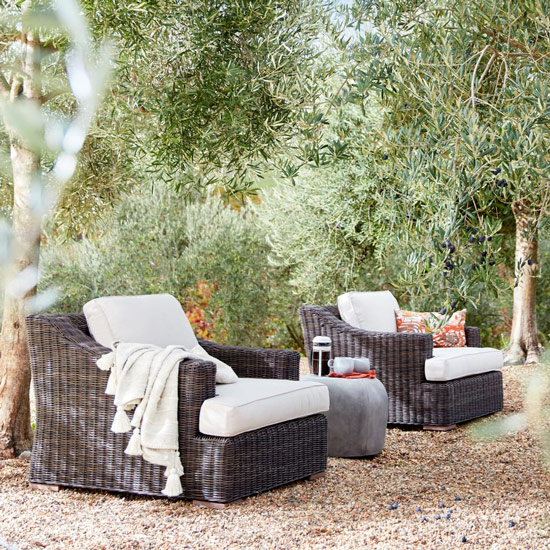
Pictured above: The Carmel Lounge Chair
Enter All-Weather Wicker
What is All-Weather Wicker? Crafted from HDPE (high-density polyethylene), Terra Outdoor’s all-weather wicker stands up to the elements year-round without fading warping, cracking or peeling.
Organic texture and subtle shading give it the warmth and beauty of natural rattan, with greater strength and durability yet none of the maintenance. Supported by strong, lightweight aluminum frames and topped with fast-drying Sunbrella® cushions, our all-weather wicker outdoor furniture is rust-proof and resistant to mold and mildew. It’s everything you love about wicker with none of the drawbacks.
- Our Carmel Collection has a classic feel with sloped arms and T-shaped seat cushions
- Sausalito’s track arms and boxy silhouettes strike a modern note.
- The Madera dining chair and Pacific dining chair pair beautifully with tables of teak, aluminum or concrete, complementing their smooth surfaces and crisp lines with compelling textures and curves.
Shop All-Weather Wicker Favorites
How to Properly Clean and Maintain All-Weather Wicker
To keep wicker furniture looking its best and to prolong its lifespan, regular cleaning and maintenance are essential. Fortunately, caring for all-weather wicker is relatively simple. With the right approach, your furniture can withstand the elements for years to come.
To clean all-weather wicker furniture, start by removing loose dirt and debris from the surface using a soft-bristle brush. Once the surface is clear, prepare a cleaning solution by mixing a mild dish soap with warm water.
Use a soft cloth or sponge to gently scrub the furniture, focusing on any stained or heavily soiled areas. For dirt trapped in the crevices, use a soft toothbrush or a low-pressure garden hose to rinse it out.
Using a pressure washer on a low setting can be very effective as demonstrated in the video below by SolGrace Home. However, take the necessary precautions including ensuring that the water pressure will not break or loosen the wicker weave.
Preventive Maintenance
To maintain the appearance of all-weather wicker furniture, protect it from prolonged exposure to harsh sunlight, rain, and snow. Whenever possible, place the furniture in a shaded area or use covers to shield it from UV rays. Prolonged UV exposure causes fading and/or brittleness over time.
Furthermore, while all-weather wicker is designed to resist moisture, store it in a dry, covered location during the winter months or during periods of heavy rain if possible. This will significantly extend its lifespan.
Stop by a Terra Outdoor showroom to see our all-weather wicker up close or shop https://terraoutdoor.com for the full selection.

